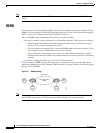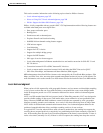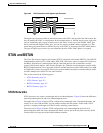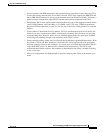
Overview of IBM Networking
DLSw+
BC-207
Cisco IOS Bridging and IBM Networking Configuration Guide
78-11737-02
This section contains information on the following topics related to DLSw+ features:
• Local Acknowledgment, page 207
• Notes on Using LLC2 Local Acknowledgment, page 209
• DLSw+ Support for Other SNA Features, page 210
DLSw+ is fully compatible with any vendor’s RFC 1795 implementation and the following features are
available when both peers are using DLSw+:
• Peer groups and border peers
• Backup peers
• Promiscuous and on-demand peers
• Explorer firewalls and location learning
• NetBIOS dial-on-demand routing feature support
• UDP unicast support
• Load balancing
• Support for LLC1 circuits
• Support for multiple bridge groups
• Support for RIF Passthru
• SNA type of service feature support
• Local acknowledgment for Ethernet-attached devices and media conversion for SNA PU 2.1 and
PU 2.0 devices
• Conversion between LLC2 to SDLC between PU 4 devices
• Local or remote media conversion between LANs and either the SDLC Protocol or QLLC
• SNA View, Blue Maps, and Internetwork Status Monitor (ISM) support
MIB enhancements that allow DLSw+ features to be managed by the CiscoWorks Blue products, SNA
Maps, and SNA View. Also, new traps alert network management stations of peer or circuit failures. For
more information, refer to the current Cisco IOS release note for the location of the Cisco MIB website.
Local Acknowledgment
When you have LANs separated by wide geographic distances, and you want to avoid multiple resending
or loss of user sessions that can occur with time delays, encapsulate the source-route bridged traffic
inside IP datagrams passed over a TCP connection between two routers with local acknowledgment
enabled.
LLC2 is an ISO standard data-link level protocol used in Token Ring networks. LLC2 was designed to
provide reliable sending of data across LAN media and to cause minimal or at least predictable time
delays. However, RSRB and WAN backbones created LANs that are separated by wide, geographic
distances-spanning countries and continents. As a result, LANs have time delays that are longer than
LLC2 allows for bidirectional communication between hosts. Local acknowledgment addresses the
problem of unpredictable time delays, multiple resending, and loss of user sessions.
In a typical LLC2 session, when one host sends a frame to another host, the sending host expects the
receiving host to respond positively or negatively in a predefined period of time commonly called the T1
time. If the sending host does not receive an acknowledgment of the frame it sent within the T1 time, it
retries a few times (normally 8 to 10). If there is still no response, the sending host drops the session.


















